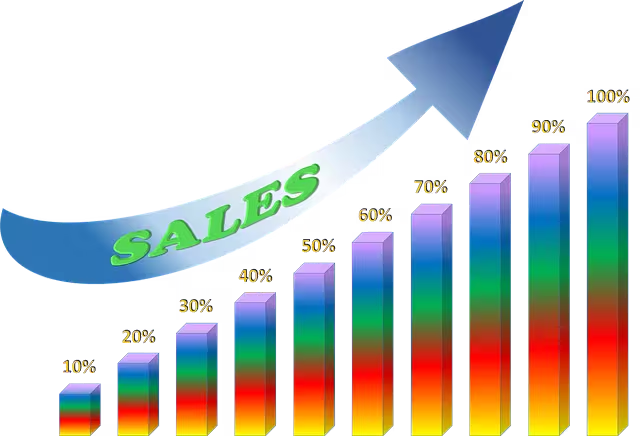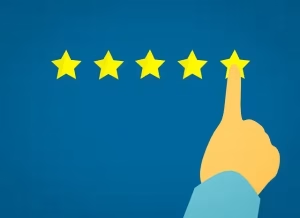In the world of business, few things are as critical as knowing what the future holds for your revenue. For decades, companies have relied on traditional sales forecasting methods. These often involve a mix of gut feelings from senior sales reps, a quick look at last year’s numbers, and a healthy dose of hopeful guesswork. The results are often unreliable, leading to poor inventory management, misallocated budgets, and missed growth opportunities.
But what if you could replace that crystal ball with a powerful, data-driven engine? This is precisely the function of predictive sales forecasting. It represents a fundamental shift from reactive estimation to proactive, intelligent prediction. By using the power of artificial intelligence and machine learning, this modern approach to sales forecasting provides businesses with a clearer, more accurate vision of their financial future.
This article will provide a complete overview of this transformative technology. We will define what predictive sales forecasting is, explore how its core components work, compare it to traditional methods, detail the most effective predictive models, and outline the immense benefits it offers. Finally, we will provide a practical guide on how to implement a predictive sales forecasting strategy within your own business.
What Is Predictive Sales Forecasting?

Predictive sales forecasting is a sophisticated process that uses your company’s historical data, current market trends, and advanced algorithms to predict future sales outcomes with a high degree of accuracy. Think of it as a significant upgrade to your standard sales forecasting process. Instead of simply looking at what you sold last quarter, this method analyzes hundreds or even thousands of data points to find hidden patterns and connections. It looks at which lead sources bring in the best customers, how long it takes for a typical deal to close, and even how outside factors like economic conditions or seasonal changes might affect your sales.
The key difference between this and older methods is the use of machine learning and artificial intelligence. These smart technologies are what allow the system to analyze massive amounts of information and make connections that a human simply could not see. While traditional sales forecasting might result in a single number, a predictive model provides a range of possible outcomes. For example, instead of just predicting $500,000 in sales for the next quarter, it might tell you there is a 90% probability of hitting between $480,000 and $525,000. This level of detail allows for much smarter and more flexible business planning.
An excellent way to understand this is to compare it to driving a car. Traditional sales forecasting is like trying to navigate a new city by only looking in your rearview mirror. You can see where you have been, which gives you some idea of the road you are on, but it does not tell you anything about the traffic jam, construction, or sharp turns that lie ahead.
Predictive sales forecasting, on the other hand, is like using a modern GPS. It not only knows the map but also analyzes real time traffic data, suggests the fastest routes, and recalculates when conditions change. It gives you the intelligence you need to navigate the future of your business with confidence. This advanced form of sales forecasting is becoming essential for businesses that want to compete effectively.
The Core Components: How Predictive Forecasting Works

To truly appreciate the power of predictive sales forecasting, it is important to understand the engine running under the hood. The process might seem complex, but it can be broken down into three main stages. Each stage is critical for turning raw data into actionable insights that can guide your business strategy. This systematic approach ensures that the resulting sales forecasting is not just a guess, but a calculated and reliable prediction based on real evidence from your business operations.
Data Aggregation & Cleansing
The first and most important step is gathering and cleaning your data. A predictive model is only as good as the information it is fed, so this stage is foundational. The system pulls data from a wide variety of sources to get a complete picture of your business. Key data sources include your Customer Relationship Management (CRM) system, which contains a wealth of information about your leads, deals, and customer interactions. It looks at where leads came from, how long they stay in each stage of your sales pipeline, and the reasons deals are won or lost.
Historical sales figures are also crucial, as they provide a baseline of past performance. Website analytics can show how customer behavior online translates into sales. Data from marketing campaigns can reveal which efforts are driving the most valuable leads. The system can even pull in external data, such as general economic trends, competitor activities, or seasonal buying patterns that affect your industry.
Once all this data is collected, it must be cleansed. This involves removing duplicates, correcting errors, and filling in any missing information. Clean, well organized data is essential for the predictive algorithm to work correctly. Without this step, the sales forecasting results would be unreliable.
Predictive Modeling
This stage is the brain of the operation. After the data has been aggregated and cleansed, it is fed into a predictive model. This model is essentially a complex algorithm powered by machine learning. The algorithm sifts through all the data, searching for statistically significant patterns and relationships. It learns what factors consistently lead to a successful sale.
For example, the model might discover that leads from a certain industry who downloaded a specific whitepaper from your website and were contacted within 24 hours have a 95% higher chance of closing than other leads. Or it might identify a seasonal trend showing that sales for a particular product always spike in the third quarter. These are the kinds of deep insights that are nearly impossible to find through manual analysis.
The machine learning aspect means the model gets smarter over time. As new data comes in, the algorithm continuously refines its understanding of your sales process, making your sales forecasting more and more accurate with each cycle.
Forecasting & Analysis
In the final stage, the model uses the patterns it has discovered to generate a forecast. As mentioned earlier, this is not just a single number. Instead, the system produces a range of potential outcomes and assigns a probability to each one. You might receive a report that shows the most likely sales figure, along with best case and worst case scenarios.
This probabilistic approach is incredibly valuable for strategic planning. It allows you to create flexible budgets and resource plans. For example, if the sales forecasting shows a high probability of exceeding your target, you might decide to invest in more inventory or hire another salesperson. If it shows a potential downturn, you can proactively adjust your marketing spend or focus on customer retention. The analysis component provides the “why” behind the numbers, giving you the insights needed to make informed decisions that will drive your business forward.
Predictive Sales Forecasting vs. Traditional Forecasting
The move from traditional to predictive sales forecasting is one of the most significant advancements in modern business strategy. While both aim to predict future revenue, their methods and results are worlds apart. Understanding these differences makes it clear why predictive techniques are rapidly becoming the industry standard.
Traditional sales forecasting often relies heavily on human input and historical data alone. A sales manager might ask each team member for their sales estimate for the quarter. These individual estimates are then rolled up into a company wide forecast. Another common method is to simply take last year’s sales figures and add a small percentage for growth. While simple, these methods are highly subjective and prone to human error and bias. A salesperson might be overly optimistic to look good, or a manager might be too conservative to ensure their team hits its target. This type of sales forecasting lacks the ability to account for dynamic market changes or complex customer behaviors.
Predictive sales forecasting, in contrast, is objective and data driven. It removes the guesswork from the equation. By using algorithms to analyze data from dozens of sources, it provides an unbiased view of what is likely to happen. It can account for seasonality, the effectiveness of a new marketing campaign, or a shift in the economic landscape. The data-centric approach means the forecast is based on evidence, not just opinion.
Furthermore, traditional methods are static. A forecast is typically made at the beginning of a quarter and is rarely updated. A predictive sales forecasting system, however, is dynamic. It can be updated in real time as new data becomes available.
If a large deal suddenly closes ahead of schedule or a marketing campaign performs better than expected, the forecast can be instantly adjusted, giving you a constantly current view of your business’s health. This agility is a massive competitive advantage in today’s fast moving markets. Better sales forecasting allows for better decisions across the entire organization.
The 4 Primary Types of Predictive Sales Forecasting Models

Not all predictive models are created equal. The best approach for your business depends on factors like your industry, the stability of your sales cycle, and the amount of data you have available. There are several types of models, but they generally fall into a few main categories. Understanding these different types will help you choose the right method for your sales forecasting needs.
Time Series Analysis
Time series analysis is one of the most common and straightforward predictive models. It works by analyzing historical sales data collected over time at consistent intervals, such as daily, weekly, or monthly. The model looks for three key things in your data: trends, seasonality, and cycles. A trend is a long term upward or downward movement in sales. Seasonality refers to predictable patterns that occur within a calendar year, like the holiday shopping rush. Cycles are patterns that occur over longer periods, often tied to economic conditions.
This model is best suited for stable businesses with several years of consistent historical data. If your sales process has not changed much over time and your market is relatively predictable, time series analysis can provide a very reliable sales forecasting baseline. For example, a beverage company could use this model to analyze years of past sales data to predict how much lemonade to produce for the upcoming summer, accounting for the general upward trend in sales and the consistent seasonal spike.
Regression Models
Regression models, also known as causal models, take sales forecasting a step further. Instead of just looking at past sales, they aim to identify the specific factors that cause sales to go up or down. This model works by defining a relationship between a dependent variable (your sales) and one or more independent variables (the factors that influence your sales).
These independent variables can be anything you believe affects your revenue. Examples include your company’s advertising spend, the number of salespeople on your team, website traffic, or even external factors like the unemployment rate. The model analyzes historical data to determine the precise mathematical relationship between these factors and your sales.
For instance, a regression model might determine that for every $1,000 you spend on a particular type of online ad, your sales increase by $7,000. It might also find that hiring an additional salesperson leads to an average increase of $300,000 in annual revenue. This type of sales forecasting is incredibly powerful because it does not just tell you what will happen; it helps you understand why. This allows you to make strategic decisions to directly influence future sales.
Machine Learning Models
Machine learning represents the most advanced and powerful approach to predictive sales forecasting. While time series and regression models are excellent, they are often limited to analyzing a handful of variables. Machine learning algorithms, such as Random Forest or Gradient Boosting, can simultaneously analyze hundreds or even thousands of variables, uncovering incredibly complex and subtle patterns that other models would miss.
These models are particularly effective at handling non linear relationships. For example, a regression model might assume that doubling your ad spend will double your leads. A machine learning model might discover that the relationship is more complex: doubling your spend actually triples your leads up to a certain point, after which the returns diminish.
The key feature of these models is their ability to learn and adapt. As more data is fed into the system, the algorithm continuously refines its understanding and improves its predictive accuracy. This makes it the ideal choice for businesses operating in dynamic, fast changing markets. A software company could use a machine learning model to predict sales by analyzing user trial data, customer support ticket volume, website engagement metrics, and competitor pricing changes all at once. This comprehensive approach provides the most nuanced and accurate sales forecasting possible.
Qualitative Models
It is also worth mentioning qualitative models, though they are a more traditional, non predictive approach. These models are based on subjective human opinion and judgment rather than quantitative data. Examples include the Delphi method, where a panel of experts provides their forecasts, or a sales force composite, where the company’s forecast is built from the individual predictions of its salespeople.
While these methods can be useful for new businesses with no historical data, they are highly susceptible to bias and are far less accurate than data driven predictive models. They are often included in discussions about sales forecasting as a point of comparison to highlight the significant advantages of the more scientific, evidence based predictive approaches.
Key Benefits for Small and Medium Sized Businesses
The adoption of predictive sales forecasting is not just for large corporations with massive data science teams. Modern software has made this technology accessible to small and medium sized businesses (SMBs), and the benefits can be transformative. Moving from guesswork to data driven predictions empowers SMBs to operate more efficiently, plan more strategically, and grow more predictably.
One of the most significant benefits is simply improved accuracy and revenue predictability. For an SMB, cash flow is everything. An accurate sales forecasting process means you can create reliable budgets and financial plans. You know how much money is likely to come in, which allows you to make confident decisions about spending and investment. This stability reduces financial stress and provides a solid foundation for growth.
This leads directly to optimized resource allocation. When you have a clear picture of future demand, you can make much smarter decisions about where to put your resources. For example, if your sales forecasting predicts a strong fourth quarter, you know you need to order more inventory in advance to avoid stockouts. If the forecast suggests a hiring push is needed to meet demand in six months, you can start the recruitment process now. This proactive approach prevents last minute scrambling and ensures your resources are in the right place at the right time.
Predictive analytics also enables enhanced lead prioritization. Most sales teams have more leads than they can effectively handle. Predictive lead scoring models can analyze the attributes and behaviors of your leads and assign a score indicating their likelihood to convert. This allows your sales team to focus their time and energy on the hottest prospects, dramatically increasing their efficiency and close rates. Instead of treating all leads equally, they can prioritize those the data shows are most promising, leading to a direct increase in revenue.
Finally, a robust sales forecasting system can help with reduced customer churn. The same predictive principles can be applied to your existing customer base. By analyzing factors like product usage, support requests, and engagement levels, a predictive model can identify customers who are at risk of leaving. This gives you an early warning, allowing you to proactively reach out with special offers, additional support, or other retention strategies to keep their business. For any company, keeping an existing customer is far more cost effective than acquiring a new one.
Getting Started: Tools and Implementation

Implementing a predictive sales forecasting strategy might sound daunting, but many modern tools have made the process straightforward. You do not need to be a data scientist to get started. The key is to begin with a clear goal and take a step by step approach.
Common Software & Platforms
The easiest way to begin with predictive sales forecasting is by using the features already built into many popular software platforms.
- All-in-One CRMs: Many leading CRM platforms now include powerful predictive capabilities. Salesforce Einstein uses AI to analyze your CRM data and provide sales forecasts and lead scores automatically. HubSpot Sales Hub offers similar features in its higher tiers, helping businesses predict revenue based on their sales pipeline data. Zoho CRM also has an AI powered assistant that can provide sales predictions. These tools are excellent starting points because your data is already in the system.
- Business Intelligence (BI) Tools: For businesses that want more customization, BI tools like Tableau or Microsoft Power BI are great options. These platforms can connect to various data sources and allow you to build your own custom forecasting dashboards and models. They offer more flexibility than a built in CRM feature but do require a bit more technical skill.
- Custom Solutions: For the most advanced needs, a custom solution can be built using programming languages like Python (with its powerful data science libraries like Scikit-learn and Pandas) or R. This approach offers complete control and customization but typically requires a dedicated data analyst or developer.
A 4-Step Implementation Plan
No matter which tool you choose, the implementation process follows a similar path.
- Step 1: Define Your Objective: First, be clear about what you want to predict. Are you trying to forecast total revenue for the next quarter? Do you want to predict sales for a specific product line? Are you interested in forecasting sales by region? Having a specific, measurable goal is the most important first step in any sales forecasting project.
- Step 2: Consolidate Your Data: As we have discussed, data is the fuel for your predictive engine. Your top priority should be ensuring your data is clean, accurate, and centralized. This primarily means enforcing good data hygiene in your CRM. Make sure your sales team is consistently updating deal stages, lead sources, and contact information. The cleaner your data, the more reliable your sales forecasting will be.
- Step 3: Choose Your Tool/Model: Start simple. If your CRM has a built in sales forecasting feature, begin there. It is the fastest way to get started and see value. As your needs become more sophisticated, you can explore more advanced BI tools or custom models. Do not feel pressured to build a complex machine learning model from day one.
- Step 4: Analyze, Refine, and Iterate: Your first forecast will not be perfect. The key is to treat it as a living tool. Regularly compare your forecast to your actual sales results. Where was it accurate? Where was it off? Use this analysis to understand what the model is doing well and where it might need more or better data. Continuously feeding new data into the system and refining your approach will make your sales forecasting more accurate over time.
Frequently Asked Questions (FAQ)
Q1: What is a simple example of predictive sales forecasting?
A simple example would be an online clothing store using a predictive model to prepare for the back to school season. The model would analyze past sales data from July and August, current website traffic from its marketing campaigns, and even external data like regional school start dates. Based on these factors, it might forecast that the store will sell 3,000 backpacks in August with a 90% confidence level, allowing the owner to order the right amount of inventory.
Q2: What is the best predictive model for sales forecasting?
There is no single “best” model, as the ideal choice depends on your specific business. If you have a stable business with years of consistent data, a Time Series model is an excellent and reliable choice. If you want to understand what specific factors drive your sales, a Regression model is best. For businesses in complex, fast moving markets with a lot of data, a Machine Learning model will provide the most accurate and nuanced sales forecasting.
Q3: How is predictive analytics used in sales beyond forecasting?
Beyond sales forecasting, predictive analytics is a powerful tool across the entire sales process. It is widely used for predictive lead scoring to help sales teams prioritize their efforts on the prospects most likely to buy. It can also analyze customer data to identify ideal cross sell and up sell opportunities, increasing the lifetime value of each customer. Furthermore, it is used for churn prediction, identifying at risk customers so that proactive measures can be taken to retain them.
Conclusion: The Future of Sales is Predictive
The days of running a business based on gut feelings and simple historical averages are over. The future of sales belongs to the businesses that can effectively harness their data. Predictive sales forecasting is no longer a luxury reserved for giant corporations; it is an accessible and essential tool for any company serious about growth.
By moving beyond traditional methods, you transform sales forecasting from a reactive reporting exercise into a proactive strategic weapon. It provides the clarity needed to optimize your resources, the insight to focus your sales efforts, and the confidence to make bold decisions. By embracing the power of data, artificial intelligence, and the right predictive models, your business can achieve a level of predictable, sustainable growth you once only imagined.






